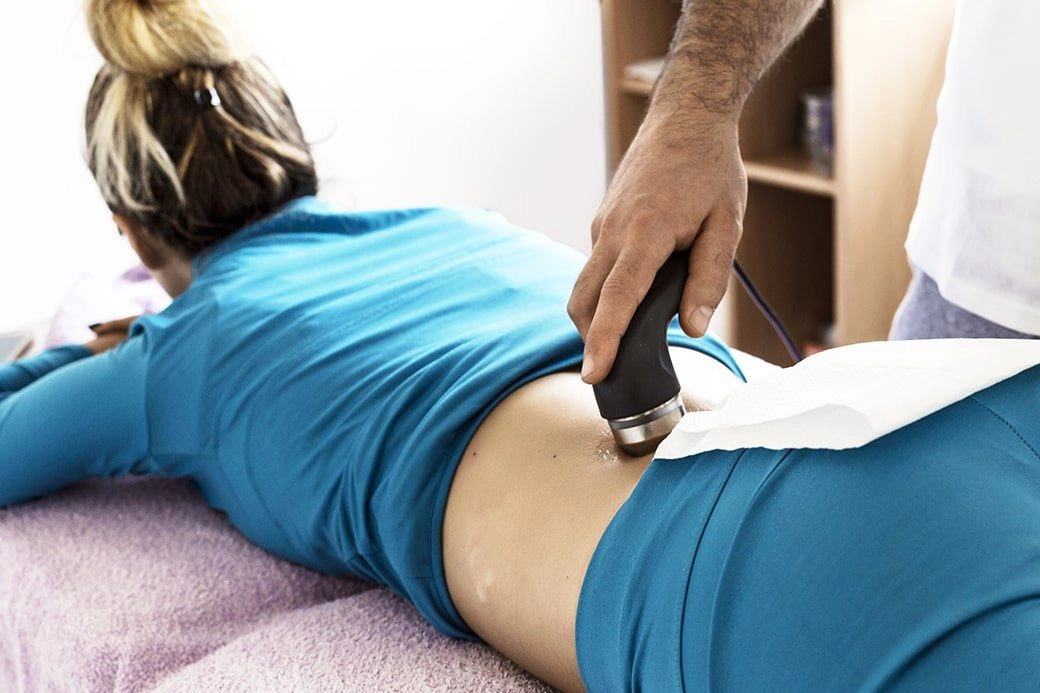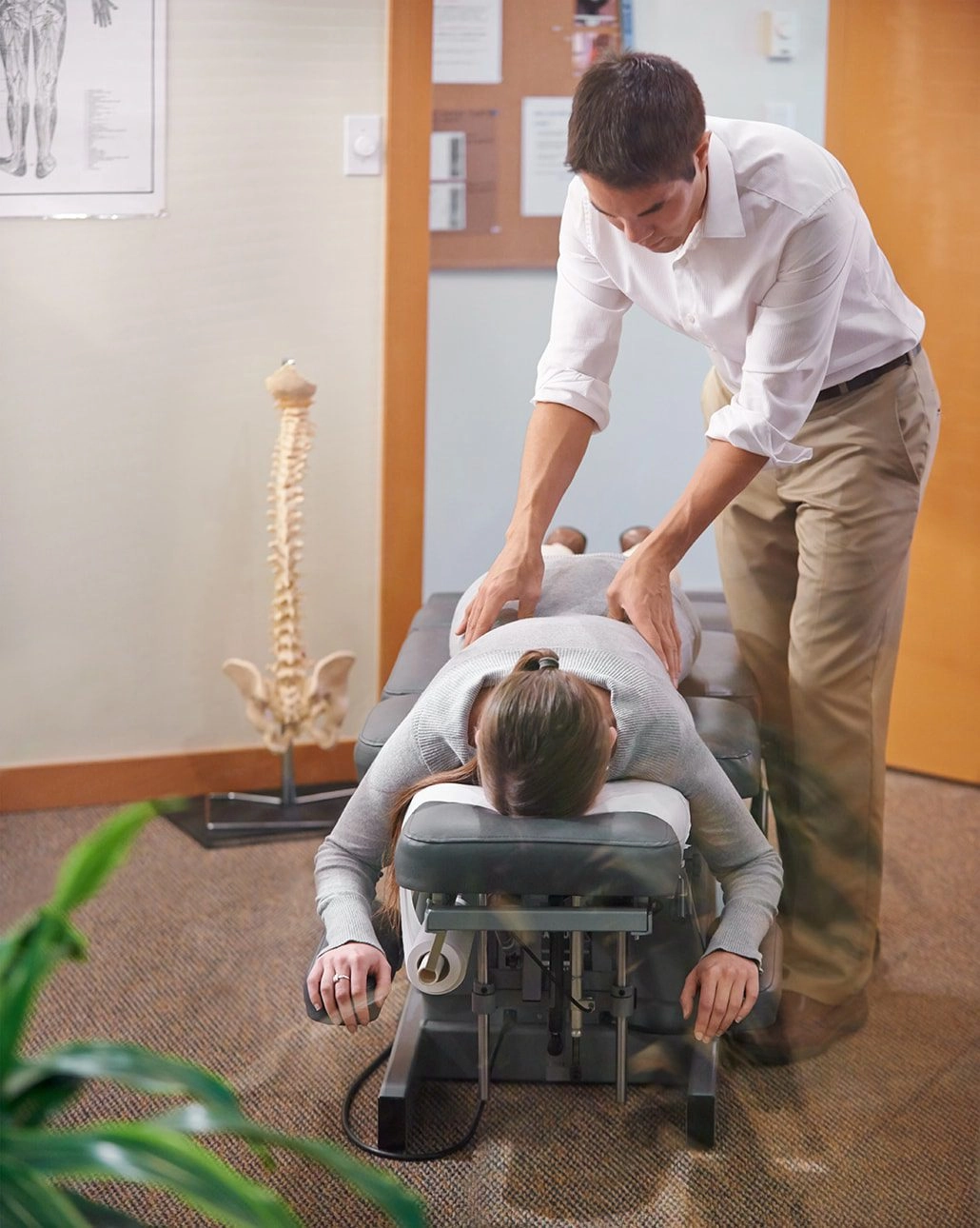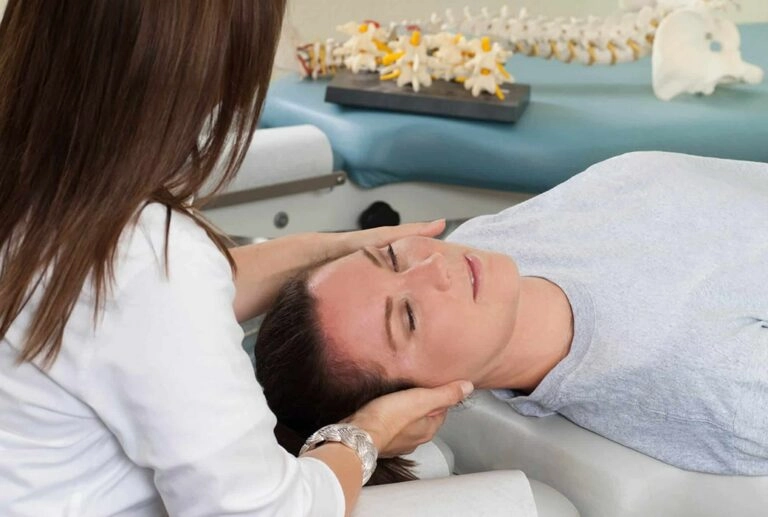You may be spending more time at home due to the coronavirus, or some other illness, but perhaps you notice that you are having pain in the hip and down the back of your leg. Or maybe you are having tingling or numbness in the neck, shoulders, fingers, or arms. Fortunately, your Anchorage chiropractor can help.
While these feelings and episodes of pain might not be intense, you are right to worry about what they might mean.
A bulging disc often has very little if any pain. Some people say they felt pins and needles type of feeling now and again, while others say they felt some pain in their legs, but many are surprised to discover that they have a bulging disc because they had no symptoms at all.
What is a bulging disc and what does this mean for your health? Let’s look at the discs in the spine so you can have a better understanding of your spinal column.
What is a Diffuse Cervical Bulge According to Your Top Chiropractor in Anchorage?
If your bulging disc chiropractor or doctor suspects a herniated disc, they may order an MRI. You may see the words Diffuse Cervical Bulge or Diffuse Disc Bulge on the MRI report. This is a general term describing a bulging disc in the neck (the technical name is the cervical spine) or a bulging disc within the spine (L-4 for example).
This information tells the chiropractor or doctor exactly where the bulging disc is along the spine.
When a disc is diffused or has a bulge, it can make contact with nerve roots, causing pain, numbness, or burning sensations.
If the bulge fails to touch a nerve, chances are that you will never know you have one as there are often no symptoms.
What is a Bulging Disc?
In between the bones of the spine, called the vertebra, are small, pillow-like discs that are filled with a jelly-like compound. The discs are designed to prevent the bones from touching one another and cushion the spine as you walk or do other things.
Due to a variety of reasons, excessive pressure can be placed on the disc, especially on one side. This causes the disc to bulge outward or diffuse. Sometimes, the disc will return to its normal shape and position.
However, continued pressure on the disc can cause it to split open and lose the interior jelly. This is called a herniated disc.
How Do You Treat a Diffuse Disc Bulge According to the Best Chiropractor in Anchorage?
Most people find that with 6-12 weeks of rest and light stretching, the disc will heal on its own.
If the pain of your bulging disc is more than you can stand for that period, or if you want to speed up the healing process, your chiropractor can help. You can also try these 9 natural ways to alleviate your bulging disc.

Depending on your unique circumstances and physical fitness, comprehensive chiropractic care may include:
- Spinal Adjustments
- Chiropractic Massage
- Anti-inflammatory supplement advice
- Low-Level Laser Therapy
- Ultrasound
- Heat or Ice Therapy
- Spinal Decompression
- Physical Therapy or Stretching Exercise Programs
After a complete examination, your chiropractor can help with your bulging disc by providing the best treatment plan for your situation.
Once your symptoms have improved, the doctor may choose to discuss some long-term changes you can make to help prevent a bulging disc in the future, such as an ergonomic workstation or different exercise approaches that can leave you feeling better than ever before.
Is Chiropractic Safe for Bulging Discs?

It’s amazing how something as small as a bulging disc can cause a person so much pain. When these discs do cause problems, you’ll want to help heal the disc as quickly as possible so you can get back into a normal routine.
Comprehensive chiropractic care, like that which you’ll find at our Anchorage chiropractic clinic, has been proven in multiple studies to be an effective treatment to help the disc heal but also offer substantial pain relief.
One 2006 study used 102 subjects with bulging disc pain. They received treatment 5 days per week, with a maximum of 20 adjustments performed over the study period. All subjects had substantial pain relief and complete healing when assessments were completed at the end of the study period.
Most patients find that after a few visits to their chiropractor, they have reduced pain levels and a greater range of motion. Chiropractors are experts in all things musculoskeletal, which makes them highly skilled when it comes to dealing with bulging or herniated disc problems.
Yes, it is. Nonsurgical spinal decompression often referred to simply as spinal decompression, is a motorized, computerized traction device that helps to relieve back pain.
While the word traction sounds like some sort of torture chamber device, spinal decompression is so gentle, many people fall asleep while it is being done.
By gently and slowly stretching the spine, small amounts of space are created between the discs. This relieves pressure, and over time, can allow a bulging disc to return to its normal position.
When you relieve pressure in the spine, this also allows the movement of fresh blood with nutrients, oxygen, and water to flow freely, which helps the disc heal faster.
It does take more than one session and your Anchorage chiropractor will advise you on how many sessions you may need to experience healing.
Who Should NOT Use Spinal Decompression?
Your chiropractor will tell you if you are a good candidate for non-surgical spinal decompression, but in general, anyone with the following should avoid the spinal decompression system:
- If you have metal implants in the spine
- If you have factures
- Tumors
- Advanced osteoporosis
- Bone cancer
- Abdominal aortic aneurysm
If you have any concerns, feel free to speak with your chiropractor.
What Causes a Bulging Disc?

Most bulging discs are due to one of three factors:
1) Sudden Unexpected Heavy Load
This is what happens in car accidents, a slip, and fall, or even from suddenly picking up an extremely heavy object using your back and not your leg muscles. When you are involved in some type of accident, the unnatural amount of force causes your body to react and attempt to repel the sudden excessive amount of force. This can cause one or more discs to bulge.
2) Accumulated Microtrauma
Small amounts of trauma to the disc over time can cause the disc to bulge. For example, long periods spent sitting with poor posture, slouching on the sofa, and hours bent over a tablet or cell phone are all causing a very small amount of trauma to one or more discs in the spine. Over months or years, this can one day lead to a bulging or herniated disc. It’s very common to hear patients say “I wasn’t doing anything! I just bent over to pick up X and I couldn’t get back up or I had this terrible pain in my back.” Patients can’t understand how bending over to pick up a set of keys, for example, caused them to have a bulging disc. It wasn’t that single event, however, but a culmination of events.
3) Genetics
Unfortunately, you can practice the best posture and still develop a bulging disc due to genetic predisposition. Discs that are less dense or lack fibers in the disc can cause problems for some people, regardless of what they do.
The Bottom Line

For anyone suffering pain from a diffused, bulging, or herniated disc, comprehensive chiropractic care is the best treatment for faster healing and reduced pain.
If you are wondering whether chiropractic care can help you with your back pain, give us a call today or you make an appointment online at our chiropractic office in Anchorage.
We accept all types of insurance and offer generous payment plans. Don’t live your life in pain! Call Better Health Alaska today and set yourself back on the road to healing.
Here at Better Health Alaska, we offer the Alaska Back Pain Protocol, a unique system designed to help relieve your back pain while putting you on the road to faster, natural healing.









